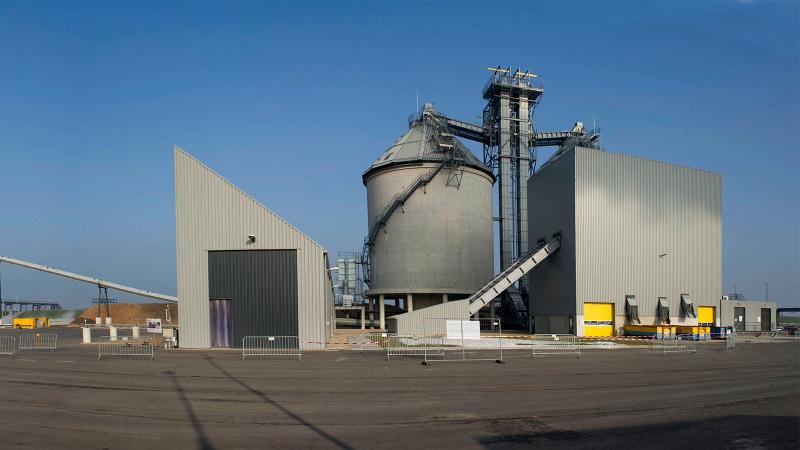Protecting a key power station transformer at Eneco
Traditionally, transformers are spot tested regularly in order to evaluate their condition. However, our latest DGA (dissolved gas analyzer) monitors reduce the need for this procedure. The continuous monitors provide reassurance to staff; enable proactive measures to optimize preventive maintenance; extend transformer lifespan and reduce the risk of unexpected and costly outages.
As part of an initiative to safeguard reliable power output and reduce risk, the Bio Golden Raand biomass power plant in the Netherlands installed a continuous transformer monitor. The Vaisala MHT410 continuously measures three key parameters in transformer oil – moisture, hydrogen and temperature. Owned and operated by the energy company Eneco, the plant produces steam for local industry as well as power, with a capacity of approximately 135 MW thermal and 49.9 MW electrical.
Background
Transformer materials can deteriorate over time, resulting in the potential for costly faults, repairs and downtime. However, the development of transformer faults results in the accumulation of dissolved gases in the transformer oil, so this oil is routinely tested as part of a preventative maintenance program. Eneco’s transformer gas monitor was installed to provide continuous data and reduce the requirement for periodic oil sampling and laboratory analysis.
Vaisala’s MHT410 instrument was installed by Flux Transformer Services, and Laurens Freriksen, a project manager and maintenance specialist for Eneco says: “We have benefited from online measurements for more than a year, and it has been very reassuring to see low hydrogen levels in the transformer oil, irrespective of the transformer load.”
Bio Golden Raand Power Station
Biomass is used as a feedstock at the Bio Golden Raand plant to generate energy from non-hazardous Grade B waste wood. Every year, the plant processes approximately 300,000 tons of waste wood that arrives in Delfzijl by ship and truck from the Netherlands and surrounding countries.
Transformer oil
Generator transformers are generally oil-filled to provide insulation and cooling. The transformer at Bio Golden Raand, for example, contains around 20 tonnes of oil. Oil degradation occurs when its molecules break down under the influence of thermal and electrical stresses due to transformer faults such as discharges or hot spots, for example.
Testing and monitoring transformer oil
Traditionally, transformer oil samples are collected once or twice per year and sent for laboratory analysis to determine the level of gases. This spot sampling method provides an indication of dissolved gases and oil quality at one moment in time. The main advantages of continuous monitors therefore, are that they are able to reveal trends so that users can correlate gas levels with transformer load, for example. Importantly, by measuring continuously, DGA monitors can provide early warnings of faults.
The levels and trends of dissolved gases can be used for fault detection or fault diagostics, and this is the subject of a Cigré Technical Brochure (Ref.783) on DGA Monitoring Systems.
In addition to hydrogen, the MHT410 also measures temperature, which is a key indicator of faults. Moisture in oil is also measured by the device because moisture decreases the dielectric strength, accelerates cellulose (insulation) decomposition, and increases the risk of bubble formation at high temperatures.
DGA monitoring at Bio Golden Raand
Explaining the reasoning behind the installation of the Vaisala MHT410, Laurens Freriksen says: “A power plant transformer is one of the most valuable assets in a power network - ours is around 10 years old and operates continuously. However, there is no redundancy so it is important for us to be able to monitor its condition and performance closely.
“We chose the MHT410 because it offered an opportunity for the early identification of potential problems, which is an important risk reduction measure. Early fault identification enables timely corrective measures.”
Data from the MHT410 continuously feeds into the Eneco digital control system, which Laurens is able to access from his laptop. This means, for example, that he is able to track transformer load on the same screen as the MHT410 measurements.
Designed for quick and easy installation the MHT410 has a low cost of ownership. This is important because the cost of DGA monitors is negligible in comparison with the value of the assets that they help protect, or in comparison with the cost of outages.
Summary
For Eneco, the installation of the Vaisala monitor is essentially a risk reduction measure, but as Laurens explains: “It is very reassuring to have constant visibility of the transformer’s condition. However, the key advantage is that it buys us time –time to plan an effective strategy if gases appear in oil, indicating a fault - to optimize the performance of the transformer and to extend its working life.”
